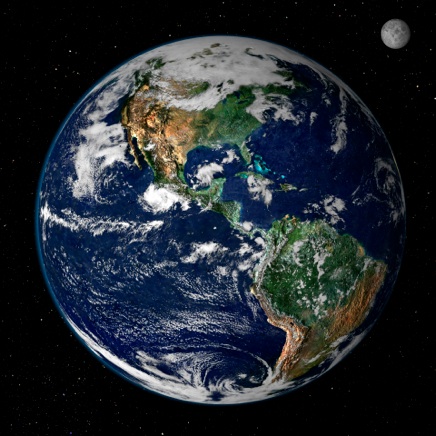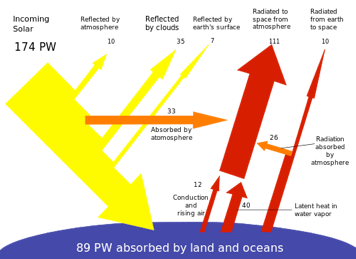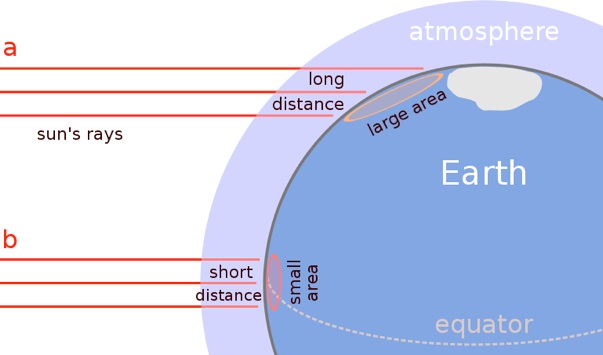


So What? This differential heating of water and land and the tropics and polar regions leads to Wind!
Temperature is a measure of the energy of molecules in a substance. The hotter they are the more they move.
The Earth’s surface temperature is controlled mainly by solar heating which turns on at dawn and then off at sunset. During the typical day the surface heats and during the night it cools. Exceptions to this happen during unusual wind events, where warm or cold air moves over the surface. Changes in the surface temperature heat or cool the air above, which leads to air movement (wind).
The sun provides a remarkably steady flow of energy, sometimes called the solar constant by scientists, to the outer atmosphere. This flow is absorbed, transmitted and scattered by the atmosphere below, and then the transmitted part gets reflected, absorbed or scattered.
The Earth’s surface is about 71% water and 29% land. There are big differences in way the sun heats water and land. Water has a higher (~4x) heat capacity, which is the amount of heat (measured in calories) required to change the temperature by one degree (Celsius). Water surface temperature change much less rapidly than land--so land areas are often hotter than the nearby ocean during the day, and cooler during the night.


Wikipedia
Solar heating of the Earth’s surface is uneven because land heats faster than water, and this causes air to warm, expand and rise over land while it cools and sinks over the cooler water surfaces.
Solar warming is generally greater at the equator where the sun shines directly and much less at the poles where the sun is low in the sky. Surfaces that are perpendicular to the sun’s ray path heat faster than those at an angle. This differential heating is passed on to the air above by conduction which causes air expansion and changes in pressure. Wind is the result of pressure changes in the atmosphere. Any shoreline is a wind machine, because of solar heating effects.
Over the whole year, polar regions are cold or cool and the tropics are warm or hot. Air moves because of these differences as it is expands where it’s hot and contracts where it’s cold. Winds blow from high pressure areas to low pressure ones.

http://nsidc.org/cryosphere/arctic-meteorology/factors_affecting_climate_weather.html
